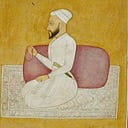The Brahui are a Dravidian speaking ethnic group in the mountains of Kalat in Pakistani Baluchistan. According to British observations however, most of the Brahui were not in fact actual Brahui.
The 1931 British Census of Baluchistan noted, “The Brahui race is composed of extremely heterogenous elements. It is called Brahui and treated as such because of its philological affinities and its confederate unity for military and political ends. The true Brahui tribe who are generally believed to be Brahui by race as well as language are only 8 out of 30 Brahui tribes.”
Denys Bray in his treatise of the Brahui language, states, “The Brahui are at present day not a separate race but an amalgamation of independent units, bound together by the bond of common good and ill. The gathering of these units around a Brahui nucleus into a semi-military organization, subdivided into two main groups, the Sarawans and Jhalawans, the uplanders and the lowlanders, with the Khan of Kalat at their head, forms the history of the rise of the Brahui Confederacy.”
He continues, “The Brahuis themselves have no false idea of the purity of their race. The popular opinion on the subject is summed up very fairly in the analysis of the Brahui tribe furnished by the ex-Khan of Kalat… the true Brahuis who came from Aleppo are only represented by the Ahmadzai (ruling family of Kalat), the Iltazai, Mirwari, Gurgnari, Sumalari, and Kalandrari; the Bangalzai, Langav, and Lahri are Baluch; the Raisani, Sarparra, and Shahwani are Afghans; the Kurd and Mamasani came from Persia; the Mengal, Bizanjav, Sajdi, and Zahri are Jadgal or Jats; while the Muhammad Shahi and Nichari are the oldest inhabitants of the country.”
Bray adds that, “no Baluch with proper pride would stoop to give his daughter in marriage to a Brahui; the Brahui needless to say marries his daughter into a Baluch family without a scruple.”
Using British Census data I’ve broken the Brahui into its three primary branches; the original Brahui nucleus and the peripheral assimilated Brahui tribal confederacies(Sarawan and Jhalawan).
Incredibly, it appears less than 10% of self-identified Brahui are “original” Brahui that don’t have an immediate claim to either Baloch, Jat, Afghan, or Iranian origin. Below is a chart depicting the tribes that comprise the original nucleus of the Brahui.
Note however that even some of these core Brahui tribes have doubtful backgrounds. The Mirwari for example are almost exclusively Baloch speakers, while the Iltazai location in Kacchi and fluency in Seraiki point toward a possible Jat origin. Conversely, Nichari and Mamashahi tribes of the peripheral Brahui are described as the, “oldest inhabitants of the country”, indicating a possible claim to original Brahui status. Or perhaps an older tribe from the Kalat region?
Implications
Genetics analysis of the Brahui has typically revolved around 25 random samples of self-identifying Brahui collected by the Human Genome Data Project (HGDP). Ancestral similarities (or lack thereof) to other South Asian populations have been used to make grand pronouncements on the history and culture of the region; particularly on the issue of whether the Indus Valley Civilization was Vedic or Dravidian.
If however less than 10% of identifying Brahui are purported to be actual ethnic Brahui, the HGDP sample would be lucky to produce 2 actual Brahui for analysis. Clearly, far more extensive sampling of the Brahui at the tribal level is needed before conclusive statements on their ancestral origin can be made.
Full data for Brahui tribes below:
Sources:
Census of India Baluchistan Parts I & II Vol. IV, 1931
Encyclopedia Iranica
Brahui Language: Introduction and Grammar, Denys Brays
